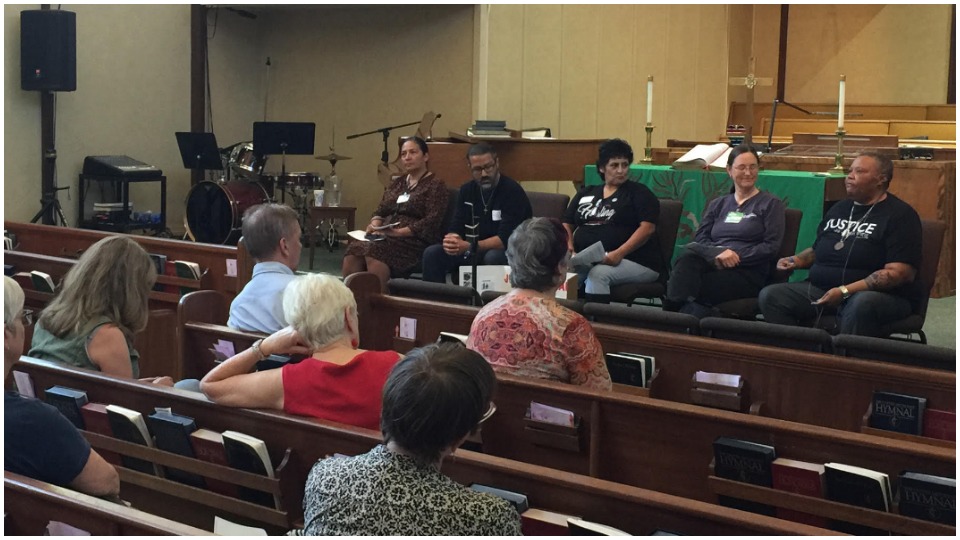
SAN JOSE—Around 50 activists from various churches and synagogues in San Jose came together on Sept. 20 to take part in a workshop on faith-based action against mass incarceration. The workshop was led by Sophia Jackson, a candidate for ordination as a Christian Church (Disciples of Christ) minister who knows the criminal “justice” system inside out—literally. She was incarcerated for eight years as a result of a 28-year drug addiction and is now engaged in mobilizing people of faith to fight mass incarceration and the “war on drugs” that has disproportionately targeted African Americans and other people of color.
The day began with an adaptation of a Navajo ritual reintegrating soldiers coming home from a war, to help participants see and feel how disorienting and difficult the transition from incarceration to freedom could be. Jackson then led an interactive discussion exposing some basic facts about criminal justice in the U.S., first asking why this country had the largest population of prisoners—two million—in the world and pointing to draconian drug laws and inadequate education and job opportunities—above all for people of color—as underlying causes. She pointed out that 60% of those imprisoned in this country have not yet been convicted of crime, because of the discriminatory impact of the cash bail system; 89% of people incarcerated in the U.S. cannot afford bail.
This mass incarceration is a huge drain on taxpayers; maintaining a prisoner for a year costs between $75,000 and $200,000, and the U.S. spends annually $22 billion on jails and prisons. This “justice” system is thoroughly racist; African Americans comprise 12.1% of the population but 37% of those incarcerated. One in three African-American men and one in six Latinx men can expect to be incarcerated at some point in their lives.
As an alternative to a system based on retribution and revenge, Jackson outlined a restorative justice system focusing on rehabilitation of offenders and reconciliation with and compensation to those they have harmed. Moving toward such a system will require a shift in public attitudes, and Jackson maintained that churches and other religious institutions are ideal places to help produce such a shift.
She outlined five things that congregations can do to fight mass incarceration:
- educate themselves about the issue
- get inside the prison walls and get to know inmates through lay chaplaincy or other programs
- lift up concerns with mass incarceration in their communities
- support prisoners’ families and those returning from prison
- challenge community leaders, including legislators, to act on this issue
The workshop included a panel of representatives of four community organizations working on criminal justice issues and inviting participation in their work:
- Showing Up for Racial Justice (SURJ) that raises consciousness in its members and in the community about white supremacy, systemic racism, and white privilege and organizes and mobilizes against these manifestations of racism.
- Correctional Institutions Chaplaincy, which provides clergy and lay chaplaincy services for county jails.
- Faith Reentry Collaborative, which supports people returning from prison and their families.
- Silicon Valley DeBug, a social justice non-profit, which, among other issues, assists communities facing police violence.
The representative of Silicon Valley DeBug, a woman whose husband was killed by police in 2014, gave particularly moving testimony as she recounted her continuing organizing efforts to seek justice for him. She told of being pulled over twice in one day by police officers who saw her bumper sticker calling for justice, one of whom accused her of “hating cops.” She sought to bring him to understand that the organization she founded in his memory, Justice for Josiah, had as one of its principles a pledge not to “act violently or speak with hate/anger” to anyone.
An evaluation concluding the workshop showed all the participants ready to work with their congregations to take action against the massive racist injustices of our “justice” system.










